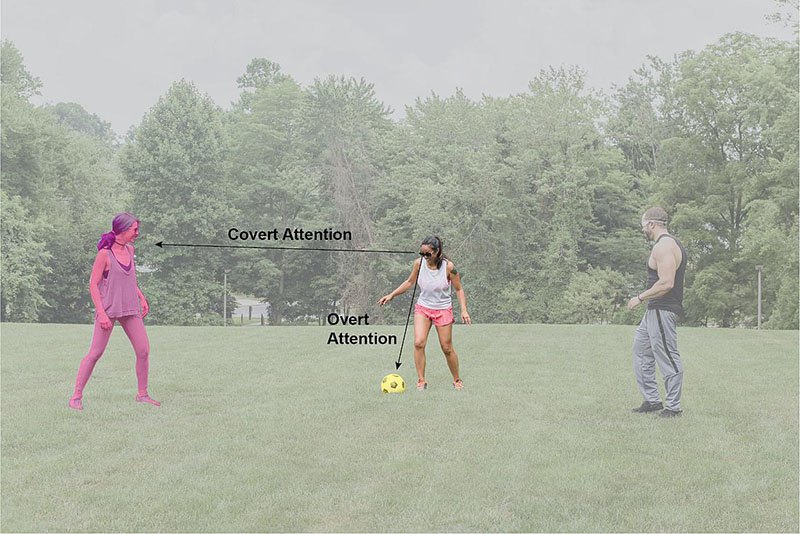Attention to objects in peripheral vision is not driven by tiny eye movements
Findings resolve controversy about brain systems for attention
Minuscule involuntary eye movements, known as microsaccades, can occur even while one is carefully staring at a fixed point in space. When paying attention to something in the peripheral vision (called covert attention), these microsaccades sometimes align towards the object of interest. New research by National Eye Institute (NEI) investigators shows that while these microsaccades seem to boost or diminish the strength of the brain signals underlying attention, the eye movements are not drivers of those brain signals. The findings will help researchers interpret studies about covert attention and may open new areas for research into attention disorders and behavior. NEI is part of the National Institutes of Health.
Scientists working on the neuroscience of attention have recently become concerned that because both attention and eye movements, like microsaccades, involve the same groups of neurons in the brain, that microsaccades might be required for shifting attention.
“If microsaccades were driving attention, that would bring into question a lot of previous research in the field.” said Richard Krauzlis, Ph.D., chief of the NEI Section on Eye Movements and Visual Selection, and senior author of a study report on the research. “This work shows that while microsaccades and attention do share some mechanisms, covert attention is not driven by eye movements.”

While focusing their eyes on a soccer ball (yellow), a player might be paying attention to a teammate (pink) in their peripheral vision. Their overt attention would be on the ball, while covert attention would be on the teammate.
This page was last updated on Friday, May 13, 2022